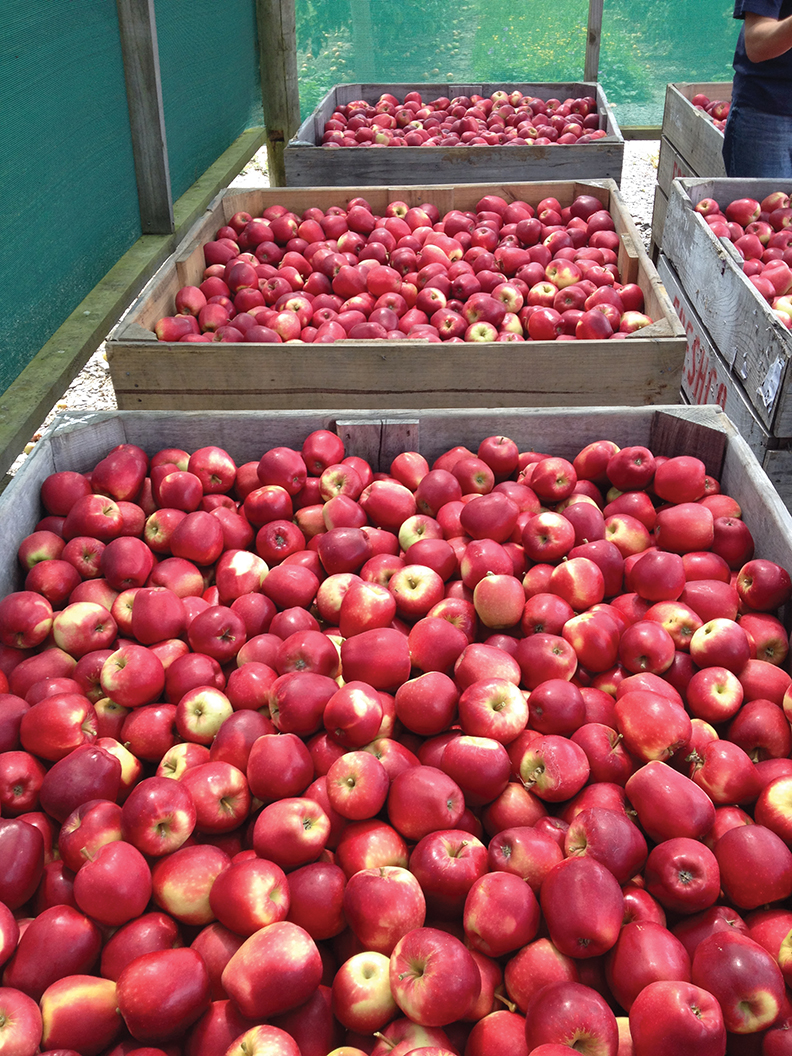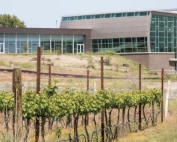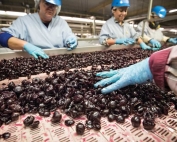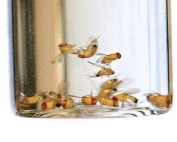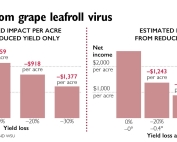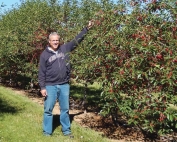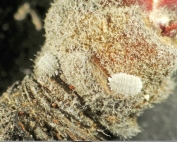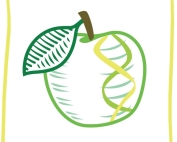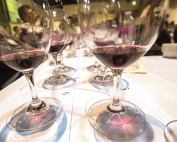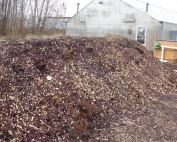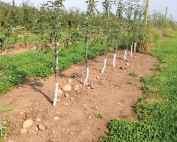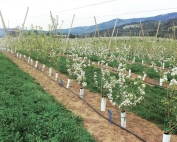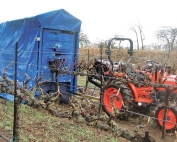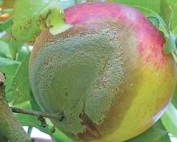ADVERTISEMENT
Corr: Consumers decide
The June 2015 issue of Good Fruit Grower examines how new varieties are changing the
Student wines toast WSU Wine Science Center’s opening
Student-made Blended Learning wines will be poured at the grand opening of Washington State
Industry celebrates WSU’s wine science center
World-class research and teaching facility elevates Washington in the wine world.
Oregon Cherry Growers co-op positioned for growth
Cooperative is focused on expanding value-added products.
Brining key to cherry processing
Brine solution makes cherry processing a year-round operation.
Cherries give fruit flies a boost
Spotted wing drosophila’s wide host range makes it difficult for orchardists to control the pest.
Is ‘Grape Virus Tax’ hitting your pocketbook?
A new study estimates the economic losses from grape leafroll disease.
Study shows value of high-density cherry systems
Sweet cherries are borne on flowers at the base of short limbs in the
The seven cherry training systems
The following material is adapted from Cherry Training Systems (PNW 667), copyright 2015
Training sweet cherries
New guide gives step-by-step details for managing cherries in seven different systems.
Cherries harvested as berries
A Utah researcher joins others who want to change how cherries are grown and harvested.
Optimizing cherry quality during export
Choosing the right MAP liner can improve fruit quality.
New cherry varieties wanted urgently
Growers are frustrated by the pace of WSU’s sweet cherry breeding.
Early cherry is on fast track
WSU’s elite selection matures a little after Chelan.
WSU team taking on cherry disease
Little cherry virus 2 is spread by mealybugs
Calcium improves cherry quality
Calcium in field sprays and added to cooling water reduced pitting and improved cherry firmness.
Why go with Arctic GMO apple?
There are apple varieties that naturally don’t turn brown.
Match vintage with wine style
There is a market for cool vintage wines.
Vintage variation in the vineyard
There’s no room for error in a cool vintage.
Chelsea Durfey, Young Grower from Sunnyside, Washington
I’ve had so many mentors... They’ve taught me about pruning, soil biology, bees, products, and applications, and there’s so much yet for me to learn.
Extracting goodness
Sales are growing for varietal grape seed oils and flours made from pomace.
New cools of the trade
Secondary chillers are replacing conventional storage cooling systems.
Reducing water usage
E & J Gallo reduced its winery water usage by 25 percent.
Branching experiment results in more feathers
Treatments with Promalin or MaxCel put more branches on young apple trees.
Understand key roles of roots
Knowing more about what’s below ground might translate into improved yields and better informed management decisions.
Six steps to good orchard site preparation
It’s important to prepare your surface soil the right way before planting.
McFerson applies for WSU director job
Jim McFerson Dr. Jim McFerson, manager of the Washington Tree Fruit Research
Turning pomace into compost
Walla Walla Community College hopes to show wineries how to compost their wine leftovers.
Beating the competition to help new plantings
In young orchards, good weed control is essential for fast, early growth and high yields.
Promising pear rootstocks
Researchers study Amelanchier and quince selections as pear rootstocks for Pacific Northwest.
Demand is strong for Geneva rootstocks
Nurseries and growers have much to learn about the newer ones.
Keep varieties updated
Orchards need to be renovated to produce the kind of fruit that’s in demand.
Rootstocks under trial
Geneva rootstocks might be less vigorous in Washington.
Irrigation effects on wine
Deficit irrigation enhances color and fruitiness of wines.
Honeycrisp is still an enigma
Growers have yet to unlock the horticultural secrets of growing Honeycrisp in a warm climate.
Automated pruning with robotics
Robots can follow pruning rules as well as humans, but a key was writing the rules.
Good to Know: Maintain good soil structure
Weed mulch plus gypsum keep surface soil soft, permeable, and well-aerated
Soil moisture can be depleted by spring
“In years when we have dry winters, you may need both a fall and early spring irrigation.” — Hemant Gohil
Soil moisture critical at bud break
Sap flow, or bleeding, is a good thing in your vineyard in early spring.
Percolation barriers could enhance water retention
Subsurface Water Retention Technology could revolutionize irrigated agriculture.
Nova Scotia revisited
Nova Scotia has earned a reputation for producing the best Honeycrisp apples.
Timing is everything when fine tuning grape irrigation
Research suggests Washington red wine grapes could benefit from new irrigation regimes.
WSU to rerelease WA 2
WA 2, which stays crisp and improves in flavor, has good potential for late-season sales.
Irrigation management key to growing Honeycrisp
Honeycrisp trees don’t like excessive water, says veteran Washington tree fruit grower.
Microwaves control brown rot
Scientists in Spain showed that microwaving peaches and nectarines prevents rot without harming the fruit.
Preparing for lift-off
WA 38 is different from most other managed varieties in that access will be
Arctic apple Q&A: Expect more GMO apples in the pipeline
Okanagan Specialty Fruits plans to submit more GMO apple varieties for deregulation within the year.
Understanding soil organic matter
Don’t overlook the soil if you want your orchard to thrive.
Health Canada approves Arctic apples for growth and sale
Health Canada has approved two varieties of Arctic apples, Arctic Granny Smith and Arctic Golden
A model for apple thinning
Carbohydrate model and good weather information support grower decisions for apple thinning.

